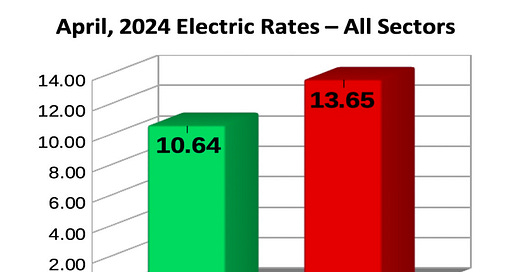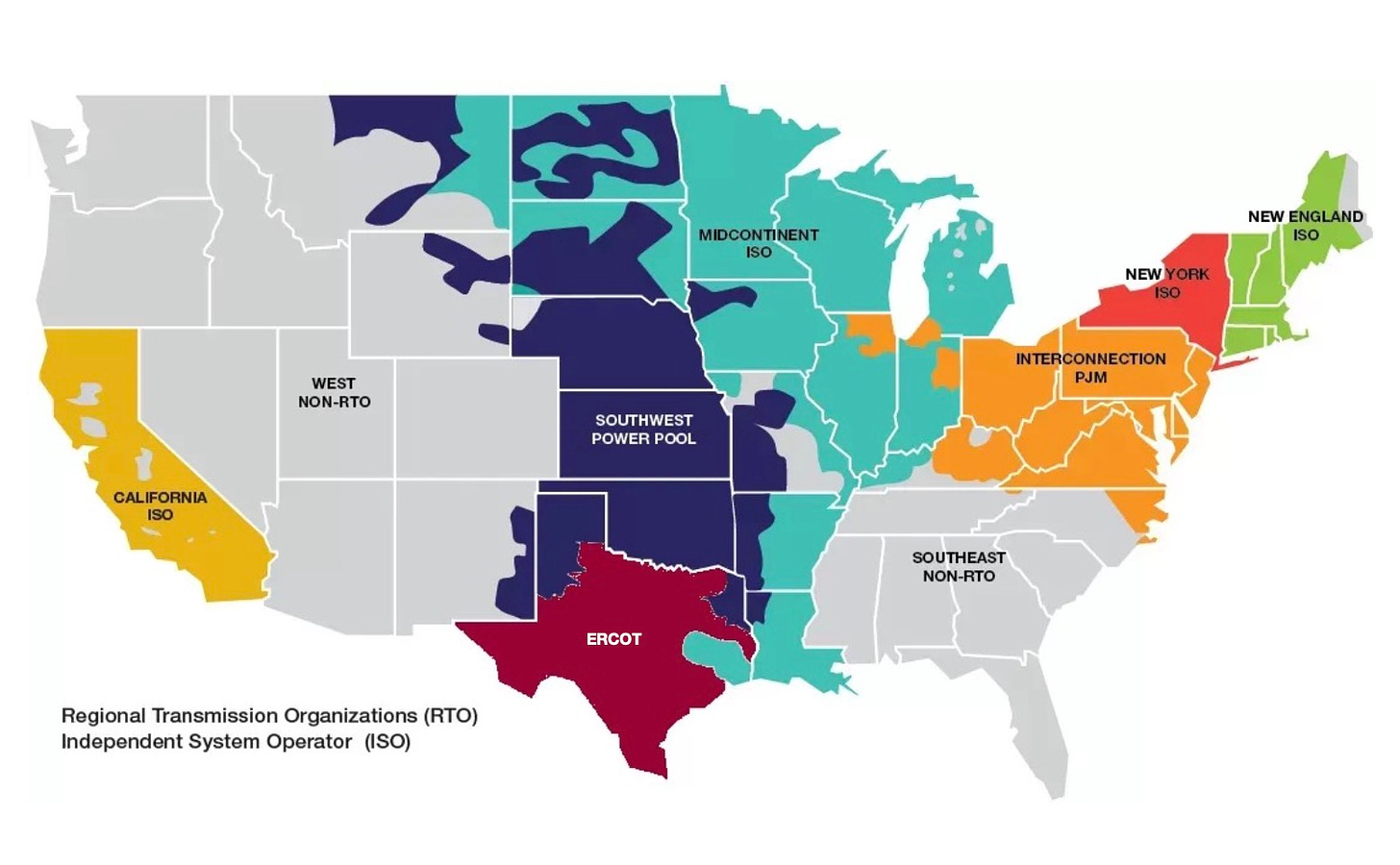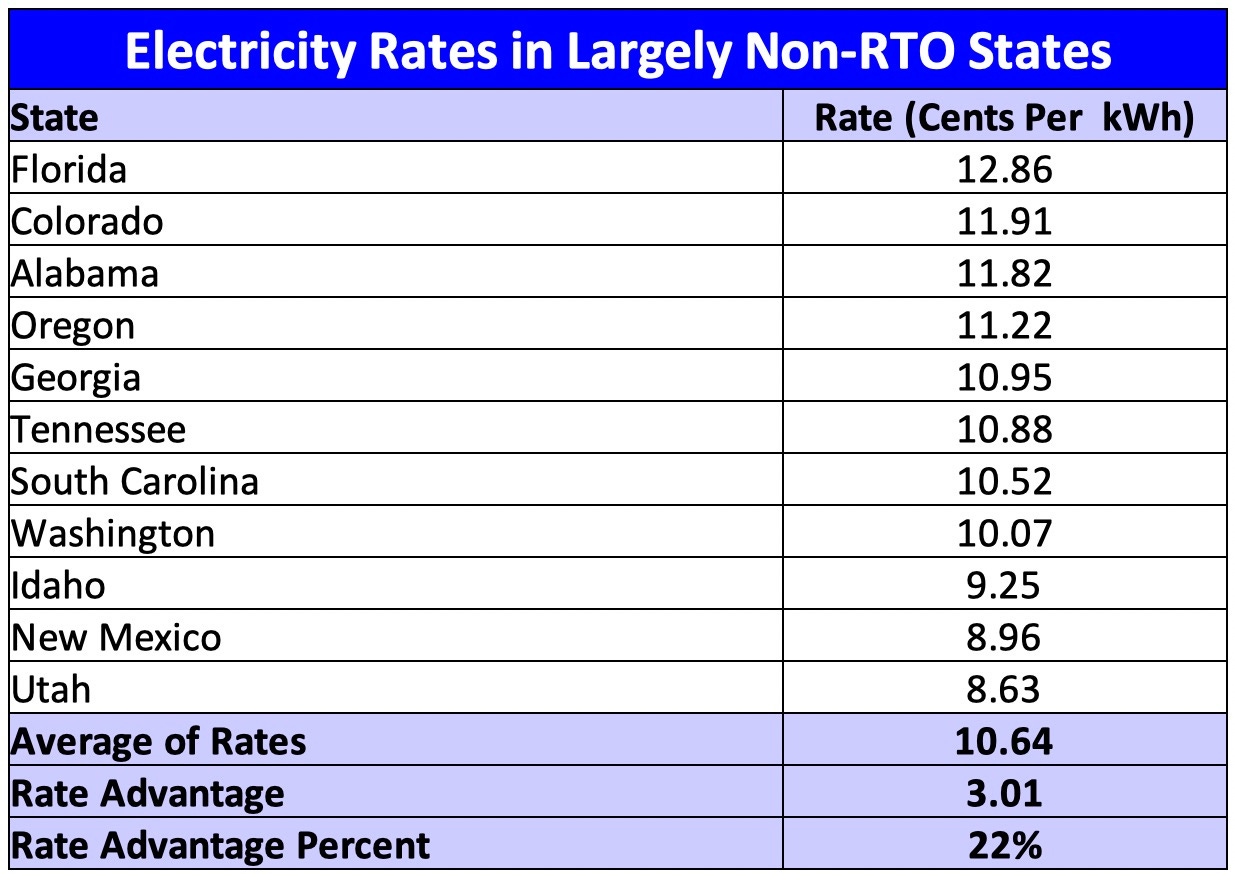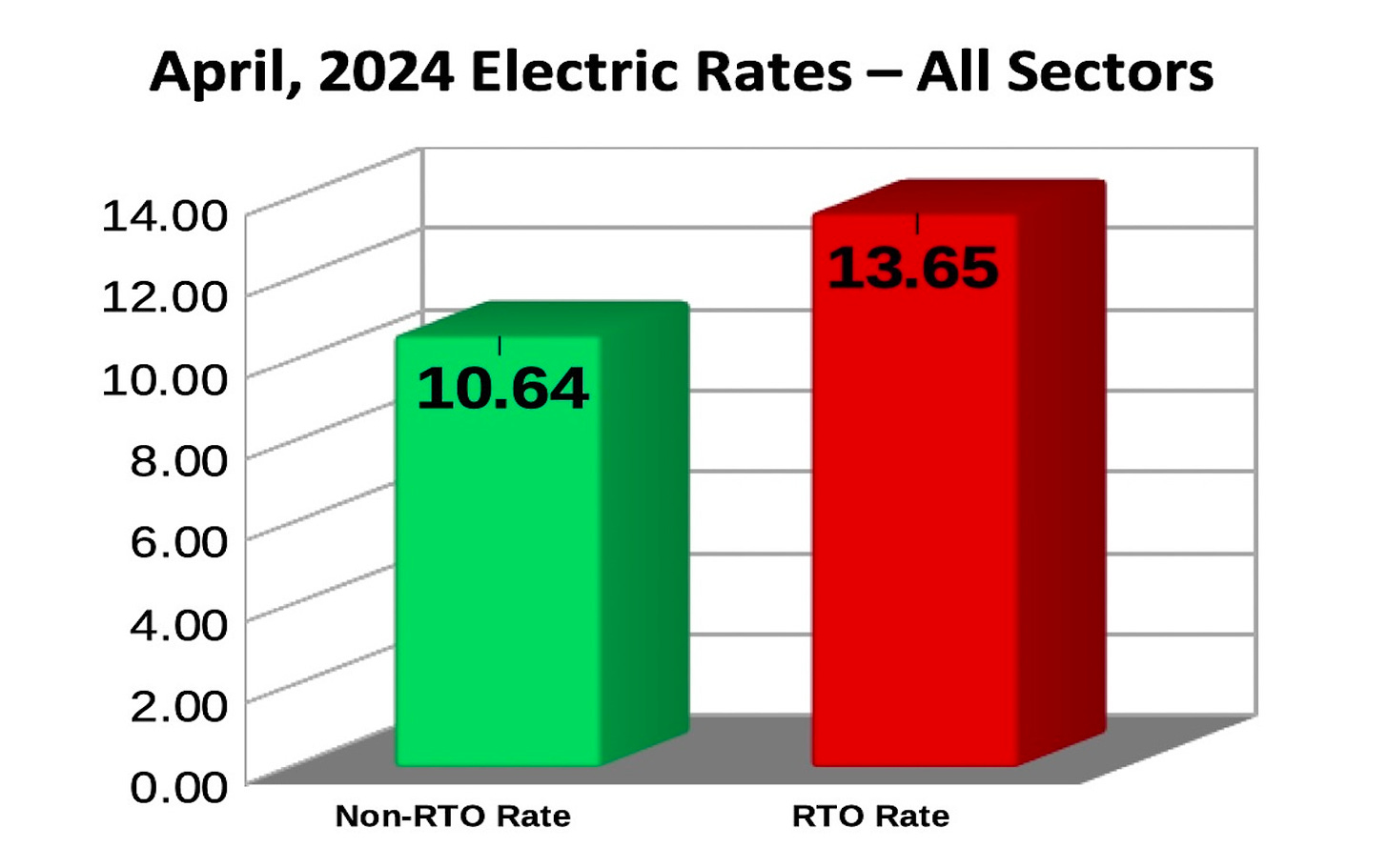Why Are Electric Rates Higher Within Regional Transmission Organization (RTO) Regions? Dysfunction Maybe?
Government is generally dysfunctional. The bigger the government, the more dysfunctional it is. That’s why the principle of subsidiarity is so important. It means leaving decisions at the level where they can best be performed. Let families decide what’s best for children. Let fire companies do emergency services. Let municipalities provide the neighborhood parks, run the schools, and maintain the streets. Let the counties keep the records and do human services. Let the states provide the highways and operate the justice system. Let the Feds do the wars. Whenever this principle is violated, there is dysfunctionality.
Government tends to fail upwards, though, and we see that in energy policy. Regional Transmission Organizations or RTOs were created in the late 1990s with the idea that regionalization would create greater efficiency and energy security. Regionalization, of course, is always the buzzword of bureaucrats and government “leaders” who like the idea of bigger because it can mean more power and money for them and at the least it’s a way to unload a problem and fashion a nirvana of unaccountability. It seldom works, but it’s beautiful in theory and appearance.
Such is the case with these RTOs (a/k/a “Independent System Operators” or “Transmission System Operators”). They are largely unaccountable to anyone other than special interests, although FERC is involved, of course, which brings dreaded government into the equation. That only makes matters worse, but let’s save that discussion for another day. Right now I just want to address whether, after more than two decades, these RTOs have created greater efficiency. Efficiency, by any measure of common sense, should mean lower costs, but is that the case?
No. Not even close.
I’ve been reading Meredith Angwin’s “Shorting the Grid” and enjoying it immensely. She’s one of our readers and occasional commenters here and always offers great wisdom. I hope, for that reason, to do a full review of the book in a few days, but, in the meantime, I was struck by her observations on both the amount of dysfunction with RTOs and her comment that they failed in their efficiency mission. So, I did a very simplistic little experiment this morning to see what the current data shows.
I went to the Energy Information Administration’s “Electric Power Monthly” page and gathered the state by state data on electric rates largely within RTO regions and those completely outside those regions. Here’s the map I used (with an update by me):
This is what I found for states largely within existing RTO boundaries:
And, this is the same data for states completely outside RTO boundaries:
Notice that not a single state in the second table has a rate above the average for the first. The difference in rates is very significant and further illustrated by this chart:
Talk about dysfunction! Talk about inefficiency! This is ridiculous. The non-RTO rate is 22% lower than the RTO version. Put another away, RTOs have produced electric prices 28% higher than non-RTO areas. This is government failing upwards in a dramatic way. It’s all about rule, upon rule, upon rule with no real markets. That’s because government (and make no mistake, RTOs are subject to FERC oversight, so they are unaccountable extensions of government) always has to put almighty “fairness” before competency and that’s the root of the problem, but more later on that. Suffice to say government operating above its level ruins everything it touches.
#RTO #ISO #TSO #FERC #EnergySecurity #Fairness








A couple of interesting factoids. Some states have both RTO and non RTO regions. North Carolina is mostly non RTO but has a small portion served by Dominion(Virginia) in the North East part of the state that is in PJM. Same for Tennessee, Kentucky, Texas, and of all places California. The parts of TN, KY, and TX that are either in RTO's(or not in the case of El Paso, TX) are fairly small and insignificant. On the other hand the non RTO areas of California include places like the City of Los Angeles, Burbank, Glendale, and Pasadena along with much of the Sacramento area.
Perhaps most important significant difference is among states that have fully bundled/vertically integrated service within an RTO like Virginia and West Virginia and states that have fully deregulated so called open access regimes where there is no regulated generation. This gets a bit more complex keeping in mind that even in say Massachusetts there are still several dozen muni utilities that have fully bundled service and own/contract for generation on a long term basis. California in the CAISO/IOU utilities doesn't quite fit into either category. CA has limited utility owned generation i.e. Diablo Canyon and the hydro fleet. There are also a number of IOU owned gas plants that operate on a full cost of service basis with guaranteed gas transportation etc.
**PJM in particular has a capacity market "opt-out" regime that Virginia, North Carolina, West Virginia, Kentucky, Indiana, Michigan, and Tennessee all use for the parts of there respective states in PJM that are all traditionally regulated.
Hi Tom. Thank you for this post!
Minor quibble. You are correct to list Texas as an RTO state (ERCOT). However, on the map, you show it as mostly non-RTO. There are non-RTO areas within Texas...mostly municipal utilities. But most of Texas is ERCOT.